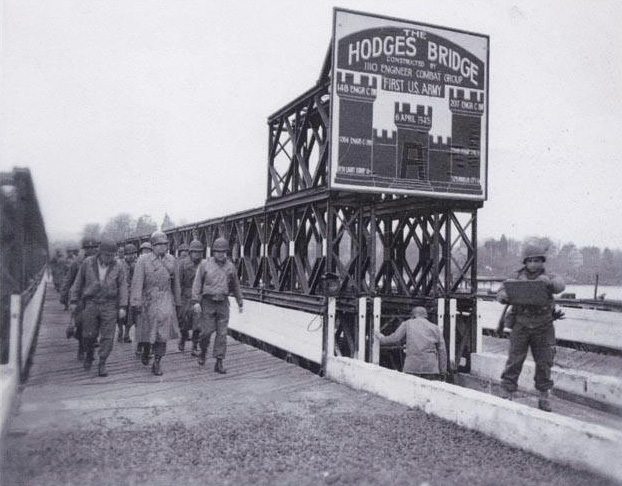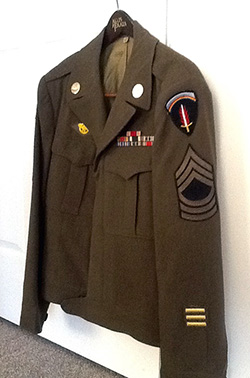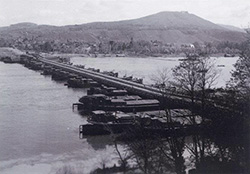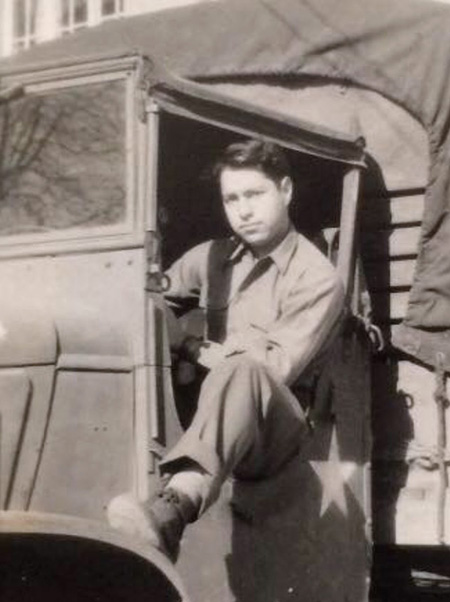Robert Kruh
Full Name: Robert F. Kruh
Date of Birth: June 15, 1925
Place of Birth: St. Louis, Missouri
Father and Mother’s Names: Frank Oswald Kruh and Nell Dee Kruh
Spouse and Children's Names: Janet Jackson Kruh (wife), Lindsay (son), Nancy (daughter).
Date Entered Service: May 24, 1943
Service Branch: Army
Rank/Specialty: Master sergeant
Service ID: 17134043
Division/Company/Unit info: 1264 Engineer C Battalion, 1110 Engineer Combat Group, First Army.
Awards and Recognition: American Theatre, Good Conduct, European Theatre with two battlestars, Victory in Europe, Occupation Duty.
Riley Connection: Bob moved to Manhattan in 1967 and has lived in Manhattan over 50 years.
Date of Death (and Age): N/A
Bio: Bob grew up in St. Louis, MO, and his father died when he was a young child. He enlisted in the Army in 1943 a few weeks before his 18th birthday. He attended basic training at Ft. Benning, GA, and was then assigned to the 102 Infantry Division, 405 Infantry Regiment. Several weeks later, he was reassigned to the 1264 Engineer C Battalion, which Bob considers one of the luckiest days of his life because he learned after the war that all but seven men of his original platoon were killed in the war.
The 1264th unit was comprised of skilled tradesmen, and unit members welded, operated heavy equipment, built bridges and performed demolition. Bob boarded a British ship bound for England and recalls that the enlisted men’s shipboard meals consisted of boiled potatoes, boiled beef, Brussels sprouts, and bread. When he arrived in Europe, his unit headed for Normandy and performed mine removal. His unit traveled by rail to Belgium, where the men served in the Battle of the Bulge. The 1264th was tasked with hauling fuel for tanks and building log roads to move equipment.
Bob’s unit moved to Germany and advanced toward the Rhine River. One train bridge across the Rhine at Remagen was still intact, and Allied forces captured the bridge and used it to move across the river. The bridge had been damaged by retreating German forces attempting to destroy it, and the train bridge eventually collapsed, due to the damage and to its not being suited to support heavy tanks. Engineers were charged with constructing a two-way Bailey bridge on barges across the Rhine, and the new bridge needed to be capable of supporting heavy tanks. Four barges were sunk upstream to serve as anchors. Pilings were stacked on abandoned barges and held in place by connecting them to a prefabricated bridge structure, and the bridge structure was cabled to the sunken barges. The 1264th created the approaches to the bridge and moved thousands of cubic yards of earth from the steep banks. When completed, 1,000 heavy tanks crossed the bridge in its first 24 hours. The bridge played a crucial role in the war, and its construction is credited with shortening the war and saving lives.
When the war in Europe ended, Bob’s unit moved to the vicinity of Stuttgart, Germany, and he worked on roads and bridges and cleared rubble. He served with the Supreme Headquarters Allied Expeditionary Force (SHAEF) in Frankfurt. The emblem was a flaming sword on a black field, denoting the evil they had faced.
In 1946, Bob returned to the U.S. and served in the Army Reserve until 1952. He was called up twice to serve in Korea, but both times his deployment was delayed because he was in graduate school at the time.
He studied chemistry at Washington University in St. Louis, MO on the G.I. Bill. He earned his bachelor’s degree in 1948 and earned a Ph.D. from Washington University three years later. He accepted a position at DePauw University in Indiana and later moved to the University of Arkansas in 1952, where he was the Dean of the College of Arts and Sciences. In 1967, he moved to Manhattan, where he served as the Dean of the Graduate School at Kansas State University for approximately 20 years. Prior to his retirement in 1992 from Kansas State, he had served six years as vice provost.
Bob met his wife Janet Jackson Kruh when they were both students at Washington University, and they have two children. Bob enjoys cooking, reading, traveling, and playing the piano. He is fluent in French and German and has written texts in German.




